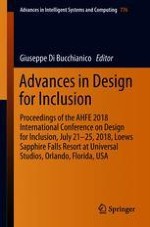2019 | OriginalPaper | Buchkapitel
Lighting in the Workplace: Recommended Illuminance (lux) at Workplace Environs
verfasst von : Sandra Preto, Cristina Caramelo Gomes
Erschienen in: Advances in Design for Inclusion
Aktivieren Sie unsere intelligente Suche, um passende Fachinhalte oder Patente zu finden.
Wählen Sie Textabschnitte aus um mit Künstlicher Intelligenz passenden Patente zu finden. powered by
Markieren Sie Textabschnitte, um KI-gestützt weitere passende Inhalte zu finden. powered by
